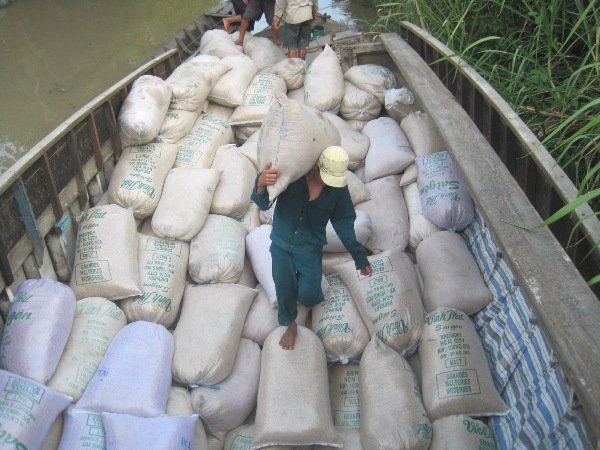
“We have sufficient information to predict demand in the G2G market in 2015,” said Huynh The Nang, general director of the Southern Food Corporation (Vinafood 2), one of the two most powerful rice exporters.
However, the market will be fiercely competitive because of the presence of strong rice exporters.
Nang said the Philippines, which has suffered from typhoon Hagupit, now has the demand for 600,000 tons of rice.
The country plans to invite bids in January 2015, though NFA, the country’s national food agency, has denied the possibility of importing more rice than was initially planned, because of Hagupit.
Some other markets including Malaysia and Indonesia have also announced their estimated demands.

It is expected that the demand from G2G markets, including the Philippines, may reach 2.5 million tons in 2015 (common white 5 percent, 15 percent and 25 percent broken rice).
Also, according to Nang, though Vietnamese rice exporters have received signs from importers about demands, they still have not obtained any contracts with considerable export volume for 2015.
“The demand is big. But whether we can sell rice will still depend on the competition between us and other exporters,” Nang commented.
Meanwhile, analysts warned that Vietnamese exporters should be aware of Thailand, a strong rival that now has a high inventory index.
An analyst said it is difficult to predict how much rice Vietnam will export in 2015 because of the instability of the Chinese market.
China is now Vietnam’s largest rice importer. However, according to Nguyen Dinh Bich, a renowned rice expert, China is also being eyed by Thailand and India.
“We have been relying on the Chinese market, but the market’s demand remains an unknown,” he said, adding that Vietnam will face big challenges in the short term and medium term with other exporters, especially in exporting common rice.
An official of the Vietnam Food Association (VFA) noted that the existence of too many rice varieties has reduced Vietnam’s rice competitiveness.
“In the common white rice market segment, for example, we offer at least 10 rice varieties. Meanwhile, some importers only accept rice with homogenous quality and variety,” he said.
The official noted that Vietnam has not been able to successfully exploit African markets which import 14 million tons of common white rice a year. It still cannot penetrate East African markets, and has only exported small volumes of rice to Ghana and Ivory Coast in West Africa.